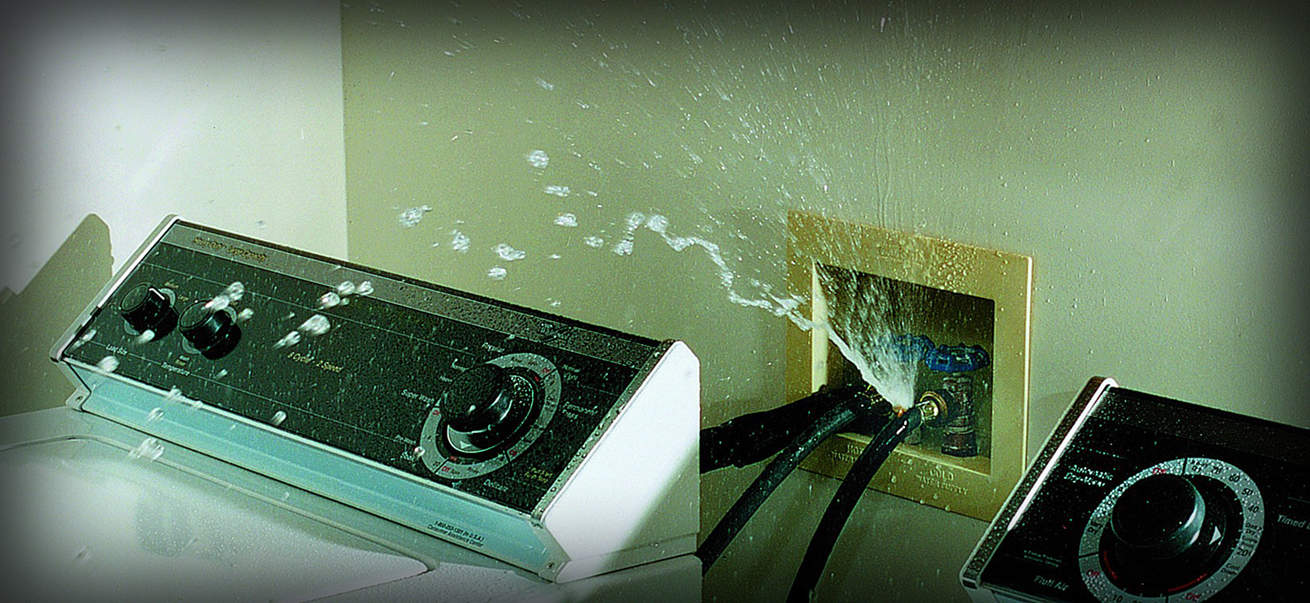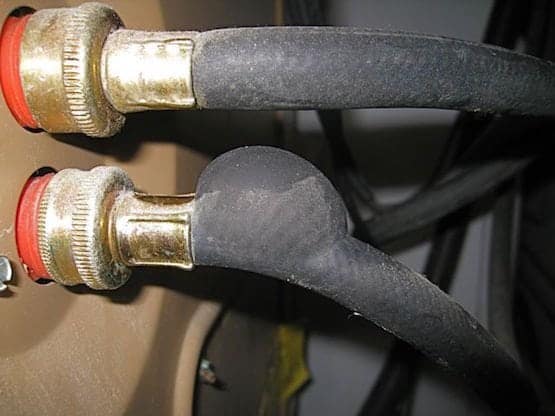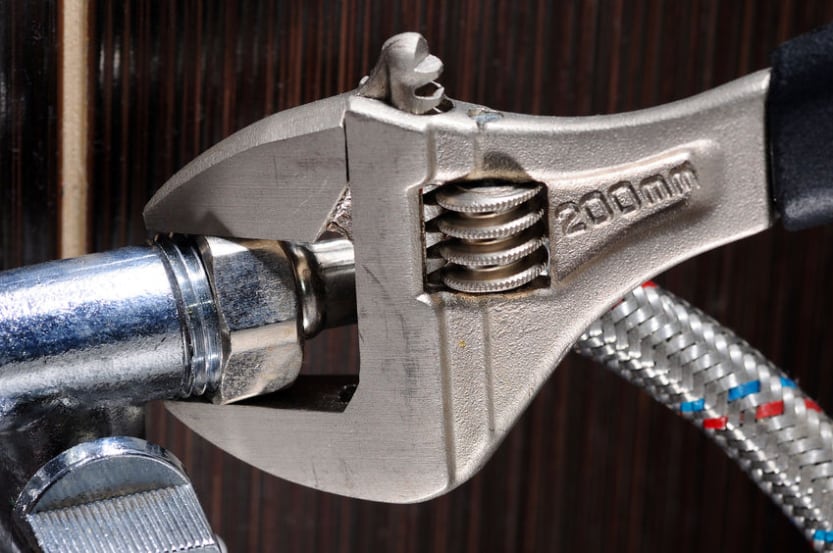Give Your Washing Machine This Extremely Critical Check-Up Now
As wonderful as a washing machine is when it comes to saving time and effort, it can also be a troublesome member of the household. It is critical that you perform a washing machine check-up now.
Washing machines are responsible for more than $150 million of damage in homes across the U.S. every year. Imagine a river flowing from your laundry room with hundreds of gallons of water per hour pouring over thresholds and flooring, ruining your floors, soaking your furniture and prized collectibles. It happens.
Washing machine hoses score number one in the lineup of the most neglected maintenance items in a home.
In 2020, State Farm paid out nearly $30 million on homeowner’s claims because of damage caused by washing machine hose failure. Why the steep price tag? It’s not the price to repair the machine—it’s the water damage the failure leaves behind.
According to State Farm, a washing machine hose holds about 70 pounds of pressure and if it fails, it can displace an average of 650 gallons of water per hour. That means if you are away from your home for a weekend and a hose bursts, you may open the door to nearly 31,000 gallons of water in your home. (Imagine a 20’ x 40’ in-ground pool worth of water in your home!) The water can cause damage to floors, drywall, and personal items. It may even displace you from your home for an extended period.
In 2020, State Farm alone paid more than 7,500 water damage claims from broken washing machine hoses. These claims ranged from a few hundred dollars to more than $100,000. There are steps you can and should take routinely to make sure this does not happen to you.
Supply Hose Leaks
More than 50% of all washing machine water damage claims can be traced back to a supply hose failure. This can be caused by:
- The hose got pinched during installation or when moved, causing a hairline break
- A faulty connection to either the washing machine or wall
- The hose is old and has become brittle
Annual Check-Up
If you have a washing machine you need to check the water inlet or “water-fill” hoses at least once a year. Not performing a washing machine check-up is like not checking the oil in your car. Nothing seems to be amiss until your life flashes in front of you as you see your sofa floating down the front walkway.
What to consider
There are two hoses inlet hoses that connect the machine to the cold and hot water faucets. You cannot tell by simply looking at these hoses if they need to be replaced. Age, chemicals in the water, and the build-up of calcium deposits over time can degrade rubber. And to complicate matters further, even a “new” hose could be old having lived a good deal of its life in a warehouse. You can’t tell by simply looking.
However, if you do see a small blister in the rubber of the hose assume that is a disaster just waiting to happen. If the rubber feels brittle or shows any signs of cracking, replace it immediately.
Every 3 years, regardless
If you cannot remember replacing your water inlet hoses, put that on your list for next weekend. Then do it again in three years. Most manufacturers and all insurance companies recommend replacing the hoses every three to five years. You cannot be too cautious.
Two types of hose
There are two types of hoses available: Rubber hoses for about $5 each or braided, stainless steel hoses for about $15 each. While stainless steel hoses with a twisted flexible mesh of stainless steel wire appear to have the edge when it comes to performance, they are not foolproof. The connectors can break loose and the rubber interior of the metal hose can deteriorate. They must be replaced every three years.
While flexible mesh hoses are a bit more expensive than rubber hoses, the added safety is worth the extra money. The braided stainless steel encases a rubber hose and provides a burst-resistant measure giving these hoses a lower failure rate than rubber hoses when properly installed.
DIY installation
Installing new hoses is not at all difficult. It’s like attaching a garden hose. But beware. Installation error is the biggest cause of premature hose failure. Sharp kinks or bends in the hose can weaken the hose itself or the seal at the connector.
To prevent this you need to allow 3 to 4-inches between the back of the washing machine and the wall. If you have a tight installation such as an old shallow laundry closet, there are hoses available that have right-angle connectors allowing the machine to be placed closer to the wall. You may have to special order this unusual item.
Need help with performing a washing machine check-up and or figuring out which hoses you need? The online site RepairClinic.com will come to your rescue with diagnoses, repair instructions, and maintenance tips for all your household appliances.
First published: 8-10-19; Updated: 3-23-22.



















Not only can they rupture, the screen next to the gasket can get full of sediment, it can take forever for the washer to fill.
Better yet, get into the habit of shutting off the main water valve to the house when you leave for more than one day. I also like to depressurize the pipes, but that’s not needed. If I leave pressure, when I turn valve on, there should be no water flow. This also lets you know if you have a leak.
The washing machine hoses come with a rubber gasket/seal in each end of the hoses brass screw ons. Make sure your hoses have them and when installing the hoses make sure they are sealed properly.
I am lucky my brothers are handy and can usually figure out how to fix things by looking it up online. I buy used because they are usually easier to work on. There is a guy in town that used to have an appliance repair shop and my brothers asked him questions the last time we had a problem. He told him the two things to check and where to go to get the parts. I paid $20 for my dryer and got my washer free on freecycle and they have been going strong for 10 years so I got my money’s worth. I can’t afford the quality washer and dryers. The companies told me they only last 3 years now (that is forever they told me) and I want one that lasts like my parents did. I want my monies worth I guess. I believe in quality products that last besides I am saving them from the landfills so I feel good about it. I only use my dryer if I have to. I use the clothes line weather permitting.
I had a plumber install a single lever shut off valve between the two supply lines. I flip it down to wash clothes and then flip it back up when I am done, eliminating any chance of a ruptured hose or flood.
And when you replace the hoses, for heaven’s sake, make sure that you don’t mix up the hot and cold! The installer did that when I bought my new washer and I shrunk a load of cotton shorts and capris which I thought I was washing in Cold water but was actually washing in straight HOT water.
While you are back there, check your dryer vent hoses. Dryer lint from defective hoses, can cause fires. Clogged vents can make your dryer stop drying.
Yeah, I had a washing machine hose break about 35 years ago. Fortunately it was located in the garage, but it was still a mess and I didn’t forget the lesson. I occasionally check the hoses and replace them after several years.